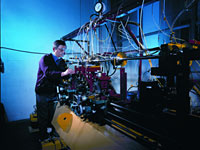Engineering Design 2 - MMAN2100
Faculty: Faculty of Engineering
School: School of Mechanical and Manufacturing Engineering
Course Outline: http://www.mech.unsw.edu.au/
Campus: Sydney
Career: Undergraduate
Units of Credit: 6
EFTSL: 0.12500 (more info)
Indicative Contact Hours per Week: 6
Enrolment Requirements:
Pre-requisite: ENGG1000
CSS Contribution Charge: 2 (more info)
Tuition Fee: See Tuition Fee Schedule
Further Information: See Class Timetable
View course information for previous years.
Description
Unlike the purely technical engineering subjects, engineering design is characterized by the synergy between “analysis” and “synthesis”, between “rationality” and “optimality”, as well as between “do the right thing” and “do the thing right”. Therefore, this course aims to make you understand the socio-technical nature of engineering design, and provide you with the capacity of not only solving a given design problem using relevant engineering knowledge, but also formulating a new design problem.
Design thinking is a fundamental skill that every engineer must have for the 21st Century. It is one of the skills that profoundly distinguish human intelligence from artificial intelligence, which greatly impacts an engineer’s long-term career success in the workplace. Therefore, this course aims to equip you with the domain-independent and solution-neutral design thinking, which can be applied to whatever technical stream (e.g., aerospace, mechanical, manufacturing, mechatronic, or naval engineering) you choose to pursue in the future.
Finally, today’s engineering problem is becoming too complex to be addressed by a single engineer based on separate disciplinary knowledge. Therefore, this course also aims to make you understand both opportunities and challenges of collaborative engineering design. Through the pedagogy of project-based learning, it’s expected that your collaborative communication, negotiation, and decision-making skills will be enhanced.










